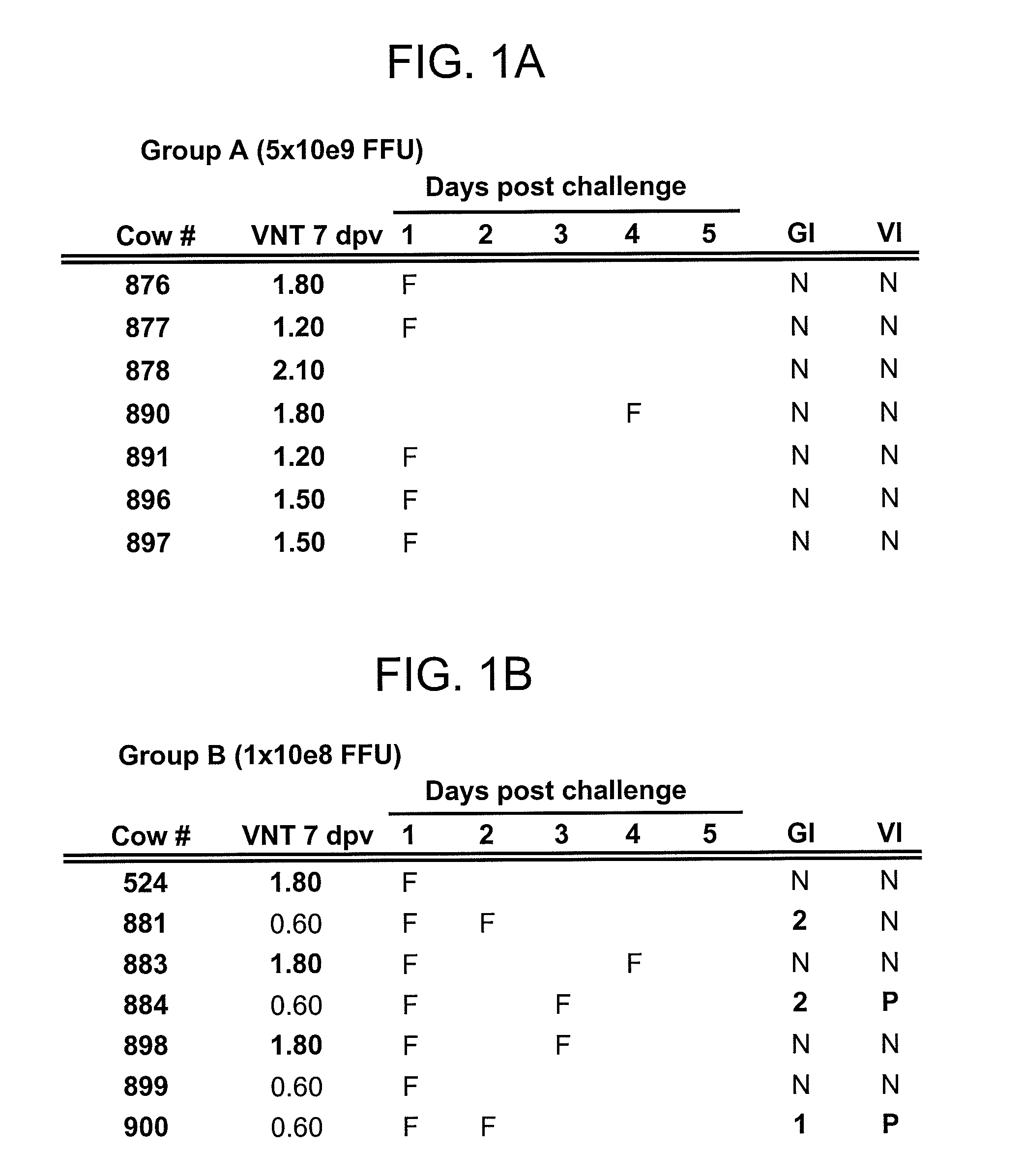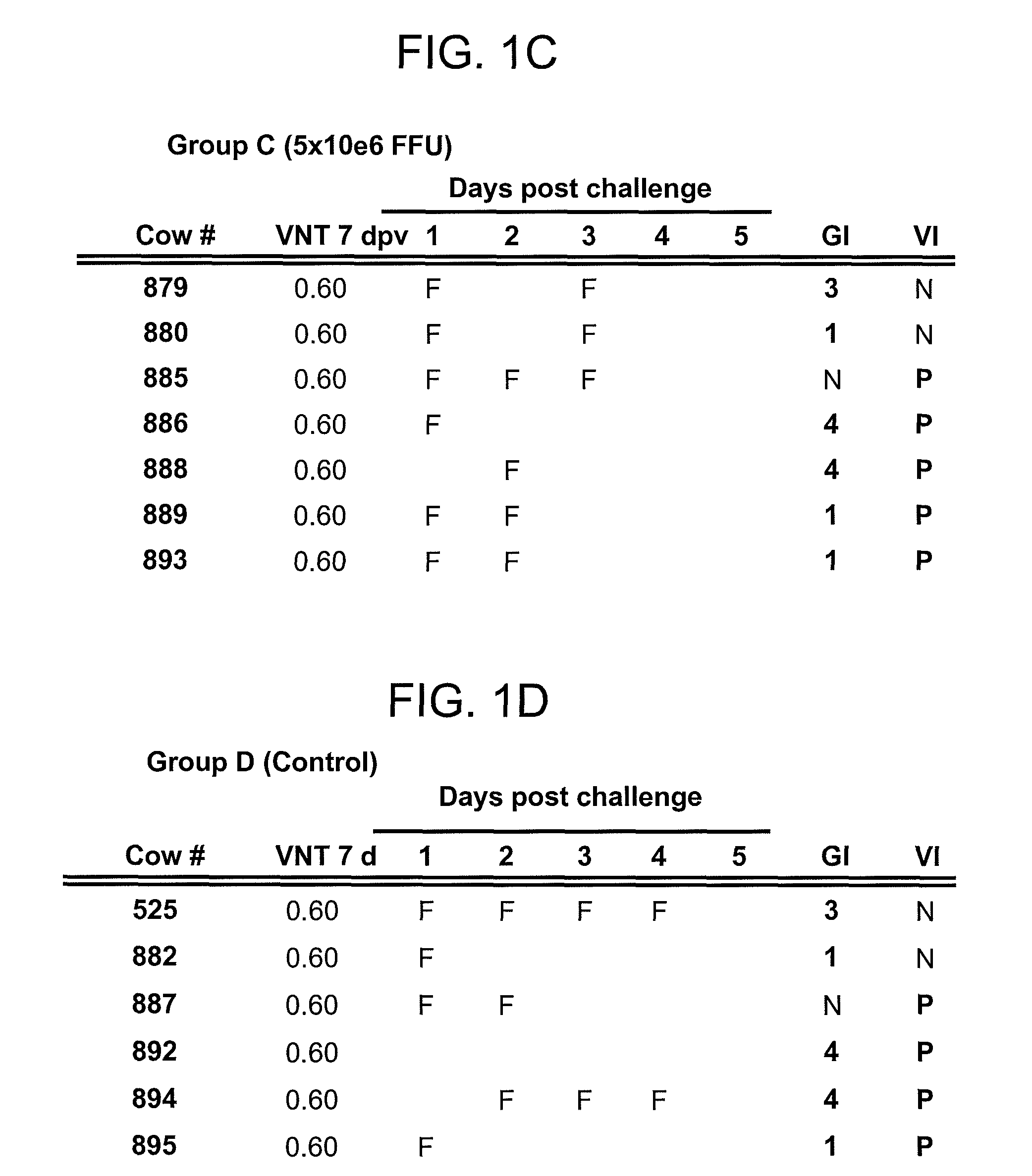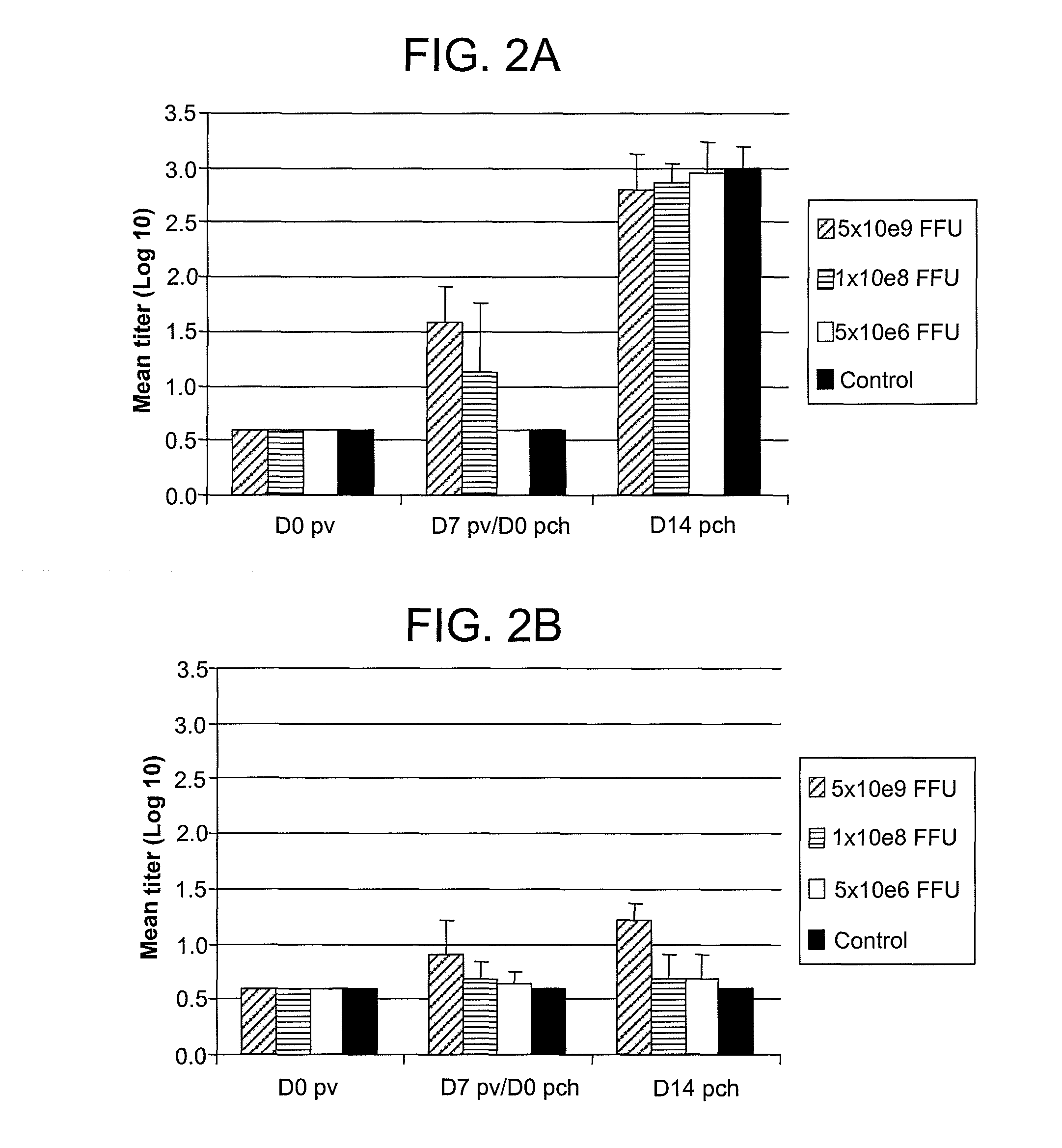Adenoviral vector-based foot-and-mouth disease vaccine
a technology of adenoviral vectors and vaccines, applied in the direction of dsdna viruses, immunological disorders, antibody medical ingredients, etc., can solve the problems of inability of vaccines to rapidly induce protective immunity, adenoviral vectors, and not being shown to induce the rapid antibody response required to combat an fmdv outbreak
- Summary
- Abstract
- Description
- Claims
- Application Information
AI Technical Summary
Benefits of technology
Problems solved by technology
Method used
Image
Examples
example 1
[0091]This example demonstrates the production of an adenoviral vector comprising a nucleic acid sequence encoding an aphthovirus antigen.
[0092]An oligonucleotide containing two copies of the tet operator (5′-AGCTCTCCCTATCAGTGATAGAGATCTCCCTATCAGTGATAGAGATCGTCGACGA GCT-3′) (SEQ ID NO: 4) was self-annealed, digested with SacI, and inserted at the SacI site between the TATA box and transcription start site of the CMV enhancer / promoter (GenBank X17403, nucleotides 174,314 to 173,566). An artificial untranslated sequence (UTR) of 144 base pairs and 3′ splice site sequences were inserted downstream of the CMV sequences, followed by a nucleic acid sequence encoding the A24 Cruzeiro FMDV empty capsid and a simian virus-40 (SV40) polyadenylation signal. The resulting A24 empty capsid expression cassette was transferred to a shuttle plasmid containing adenovirus type 5 nucleotides 1-355 and 3333-5793 or 3511-5793 flanking the expression cassette and a restriction site for linearization.
[0093]...
example 2
[0098]This example demonstrates that an adenoviral vector encoding an FMDV antigen induces protection against FMDV challenge in cows.
[0099]A dose of 5×108 particle forming units (pfu) or 5×109 pfu of the A24 GV11 described in Example 1 was administered intramuscularly to cows (6 cows per dose) on “day 1”. On day 7, cows were challenged with 2×104 infectious units directly injected into the tongue of vaccinated cows. Challenged cows were then evaluated for FMDV-induced lesions on their feet, as well as viremia.
[0100]In addition to challenge with direct inoculation of FMDV, a second group of six vaccinated cows were subject to contact challenge. Specifically, a dose of 5×109 pfu of the A24 GV11 vector described in Example 1 was administered intramuscularly to cows (6 cows per dose) on “day 1.” Seven days post vaccination, cows were placed in contact (i.e., in the same room) with cows infected with FMDV.
[0101]Cows subject to direct inoculation challenge showed no systemic clinical dise...
example 3
[0103]This example demonstrates that an adenoviral vector encoding an FMDV antigen induces protection against FMDV challenge in cows.
[0104]Four groups of 7 or 6 cows each were administered one of the following doses of the A24 GV11 adenoviral vector described in Example 1: Group A—5×109 focus forming units (ffu), Group B—1×108 ffu, Group C—5×106 ffu, Group D—no adenovirus (control). Seven days after immunization, cows in each group were challenged with 1×106 infectious units of A24 FMDV directly injected into the tongue of vaccinated cows. Challenged cows were then evaluated for FMDV-induced fever, virus neutralizing antibody titer, virus isolation (positive or negative), and generalization of infection (e.g., presence, location, and number of lesions). The results of this experiment are set forth in FIGS. 1A-1D. Neutralizing antibody titers raised against FMDV serotype A24 and serotype 5 adenovirus also were measured in challenged cows using methods known in the art. The results of...
PUM
| Property | Measurement | Unit |
|---|---|---|
| antibody titers | aaaaa | aaaaa |
| length | aaaaa | aaaaa |
| Ct | aaaaa | aaaaa |
Abstract
Description
Claims
Application Information
 Login to View More
Login to View More - R&D
- Intellectual Property
- Life Sciences
- Materials
- Tech Scout
- Unparalleled Data Quality
- Higher Quality Content
- 60% Fewer Hallucinations
Browse by: Latest US Patents, China's latest patents, Technical Efficacy Thesaurus, Application Domain, Technology Topic, Popular Technical Reports.
© 2025 PatSnap. All rights reserved.Legal|Privacy policy|Modern Slavery Act Transparency Statement|Sitemap|About US| Contact US: help@patsnap.com



